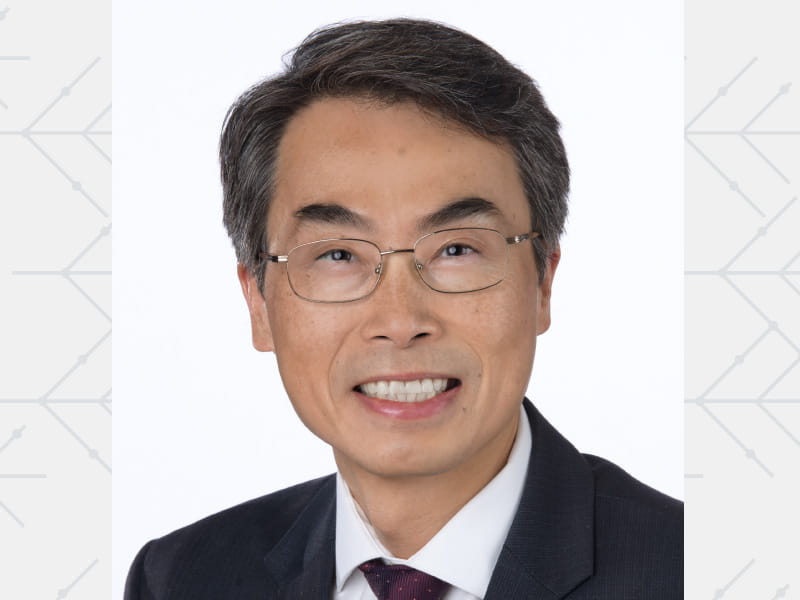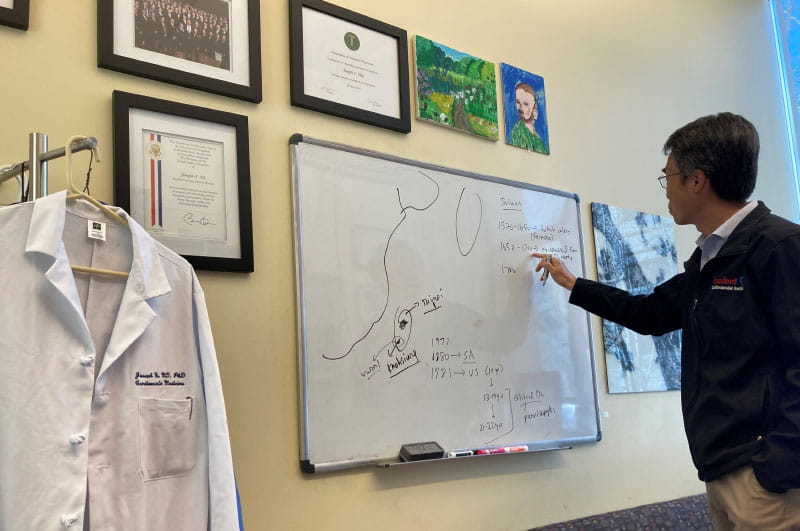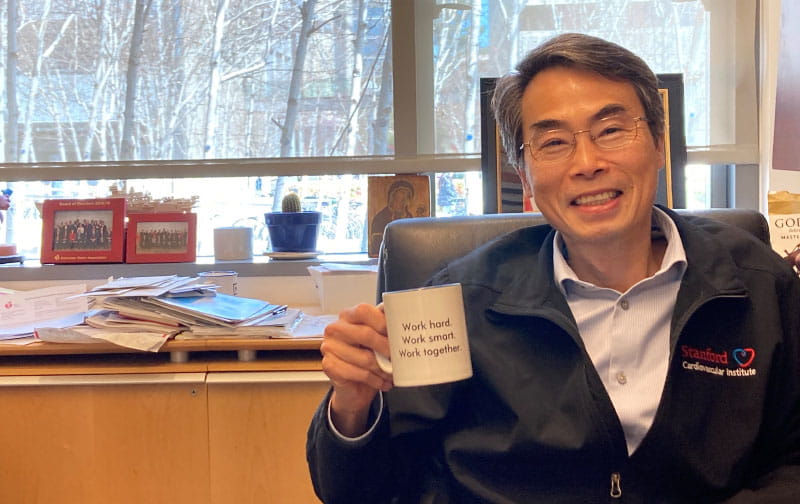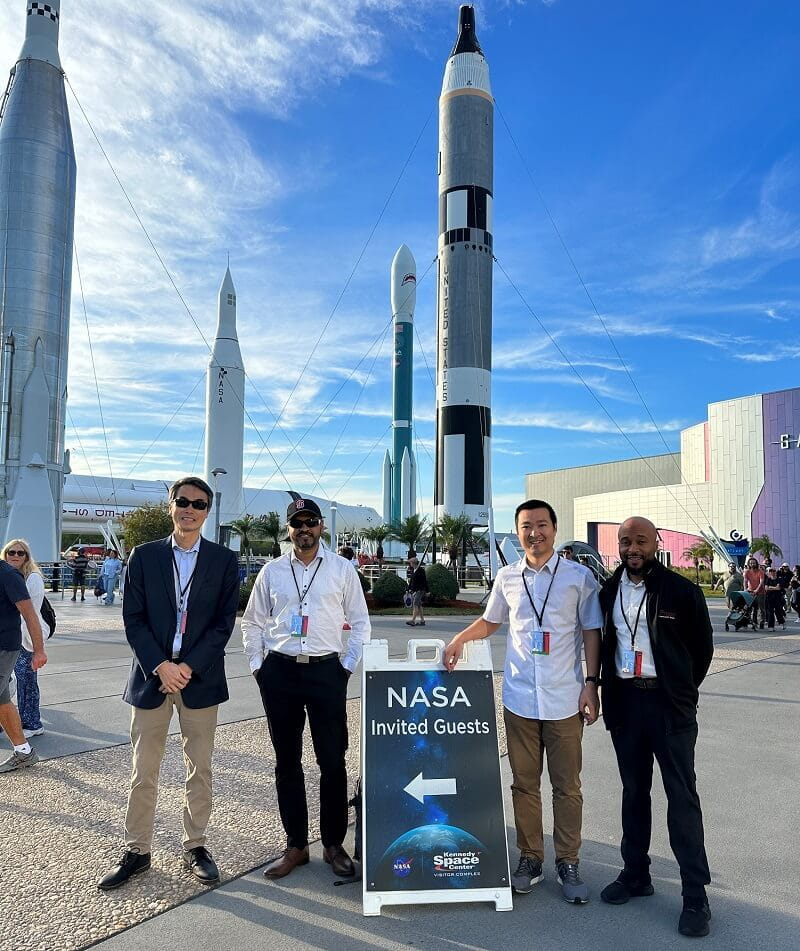New AHA president Joseph Wu is a pioneering scientist with an adventurous backstory

Over nearly 20 years at Stanford University, Dr. Joseph C. Wu has pioneered the kind of scientific advances that make his patients say: "Whoa! You can really do that?"
For instance: Wu's lab can take a vial of a person's blood, combine it with chemicals and turn it into replicas of the heart cells the person had at birth.
Wu can then study those cells to figure out when and how a heart problem developed. Then, he can use the replica cells to find the best medication to treat the problem, a process he calls "a clinical trial in a dish." With gene editing, Wu can then potentially treat the patient's genetic condition.
This seemingly futuristic approach to heart disease is quite a story.
So is the tale of how Wu became such an expert.
His personal journey spans three continents. It includes a series of near misses that turned out to actually be bull's-eyes. And it features tons of — how to say this politely? — manure.
Now the director of the Stanford Cardiovascular Institute, Wu is about to take on another major role. On July 1, he will become the 87th president of the American Heart Association; his yearlong tenure will include the AHA celebrating its 100th anniversary.
"It's fitting that such a forward-thinking scientist will help guide us into our second century," AHA Chief Executive Officer Nancy Brown said. "The AHA is rooted in science, and Joe has long been a driving force behind our devotion to innovative research that saves and improves lives."
Not bad for a guy who skipped attending fourth grade.
'I was like Huckleberry Finn'
Wu's story begins in the 1970s, in Kaohsiung, Taiwan, a port city on the southern part of the island nation.
Throughout his childhood, the fear of trouble from neighboring China gripped Taiwan. Perhaps that's why TV shows and movies in Taiwan glorified military pilots or astronauts. They inspired Joe to dream of one day guiding his own airplane or rocket.
His early years also were shaped by his family's farm, which specialized in growing a popular variety of Nijisseiki Asian pears and Red Delicious apples. His parents spent the harvesting season there, leaving Joe and his brother to be raised at times by their grandmother; the family spent summers together on the farm.
Until 1980.
Joe was 9 and his brother was 11. If his brother celebrated another birthday in Taiwan, he'd be committed to eventually joining the Taiwanese military service. The only way around it was to leave the country. So the Wu family did.
Except, they didn't have a new home lined up.
Taiwanese passports weren't widely accepted internationally, limiting their options. The countries most likely to welcome them were in South America. Other Taiwanese emigrants were already there, so the Wus spent an entire year bunking with fellow ex-pats — first in Bolivia, then Brazil, then Paraguay.
"It was the best experience of my life," he said. "I was like Huckleberry Finn."
Living in Taiwanese enclaves, Joe never had to learn another language. Nor did he go to school. He whiled away hours watching sloths creeping and anteaters slurping at the city zoo. He also spent time around tribal families who lacked material goods but were rich in other ways.
"Their smiling faces struck an impression on me," he said. "I saw that happiness is not defined by how much money you have."
The Wus received citizenship in Paraguay, which led to new passports — and new names. The boy whose given name meant "celebrate light" in Taiwanese became Jose, the Spanish precursor to "Joe."
All along, his dad's goal was getting into Argentina, perhaps starting a farm in the Pampas. Their new nationality meant new opportunities. They landed one in 1981.
In South Pasadena, California.
***
Joe's dad again found work on a pear and apple farm. Joe returned to elementary school.
In Taiwan, he'd been a mediocre student. Now, thrown into a classroom in a different language, the challenge sparked him, especially in his English as a Second Language course.
His family couldn't afford tutors. So he relied on "brute force memorization," often waking at 6 a.m. to cram for spelling tests. "There was a page: Rabbit, r-a-b-b-i-t, and, somewhere else on the page, robot, r-o-b-o-t, that I still remember to this day," he said.
Four years later, Joe's dad bought his own pear and apple farm in the Central California town of Ducor. By then, Joe was proficient enough in English that he began managing the farm — at the age of 14 and while living in Pasadena, two-plus hours away.
Joe negotiated how much they'd pay for cow and chicken manure, chemical fertilizers and insecticides, as well as how much they'd charge for their produce. Because Joe always referred to himself on the phone as "Mr. Wu," some people didn't realize they were talking to a kid until they met in person.
"It taught me a lot about dealing with people," he said. "Even as a kid, I never had a fear of talking to people older than me. I was just talking to them as my peers. I also saw how hard migrant workers work."
Joe led the dual life of student and farm manager throughout middle school, high school and his undergraduate studies at UCLA.
When it was time for Joe to move across the country for medical school, he gave up the farm job — but only after fulfilling a final duty.
Selling it.
***
He wanted to go to Harvard Medical School. He wound up at Yale.
In his first year, he met a public health student who'd also emigrated from Taiwan. Her name was Jade, and they've now been married 22 years and have two children, a 19-year-old son and a 17-year-old daughter.
He initially planned on becoming a cardiothoracic surgeon. He came away intent on becoming a cardiologist who saw patients and did research.
For his next layer of medical training, Joe wanted to go to Stanford. Instead, he returned to his alma mater UCLA for a program that pairs medical fellowship training with a path to earning a Ph.D.
When it came time for Joe to pick a mentor, his choice was — on the surface — quite odd. He found a nuclear medicine specialist.
Dr. Sam Gambhir was no ordinary nuclear medicine specialist though. He was a pioneer in molecular imaging who invented new ways of seeing inside a patient's organs and cancer cells, which meant exciting new tools to help Joe do the kind of research that fascinated him.
At the start of Joe's fourth and final year toward his Ph.D., Gambhir was lured away from UCLA. Losing his mentor seemed like a setback. Except …
As part of his hiring package at his new job, Gambhir played a prominent part in several other hires.
That's how Joe wound up at Stanford University with joint appointments in cardiology and radiology.
Creating heart cells
Joe arrived at Stanford in 2004. His primary duties were seeing patients and reading echocardiograms. He also had time allotted for research, backed by a relatively modest amount of departmental startup funding.
His first big project was based on a study that was considered a massive breakthrough. It involved turning bone marrow cells into one of the most important cells in a heart — the muscle cells that allow it to contract, known as cardiomyocytes. Only, something unexpected happened: "My work showed the opposite of what they said. I saw by molecular imaging that most of the bone marrow cells died after injection, which means they couldn't have turned into cardiomyocytes," Joe said.

As a junior investigator, he wasn't interested in challenging noted scientists in the field. All he cared about was creating cardiomyocytes. Convinced they couldn't have come from bone marrow cells, he sought to find another source. Maybe, he thought, embryonic stem cells.
At the time, only two types of stem cells were available: adult stem cells and embryonic stem cells.
Adult stem cells are the kind each person carries; thus, a 70-year-old may have stem cells that are deteriorating. This is why skin wrinkles, hair turns gray and other signs of aging develop, such as osteoporosis, sarcopenia, dementia and more.
Embryonic stem cells only exist at the start of life, and they offer all sorts of possibilities in terms of differentiation. There were challenges, too, from not knowing what they would develop into to controversies surrounding their use or how to obtain them. Federally funded human embryonic stem cell research was banned from 2001 to 2009 under President George W. Bush. Joe's research was exempt because his funding came from departmental funding, not public funds.
Joe's work with embryonic stem cells led to promising findings. His work was featured in top scientific journals. (Meanwhile, other researchers debunked the bone marrow studies.)
Then Joe got a call from a pathology colleague asking if he'd seen the latest edition of Cell.
***
Japanese scientist Dr. Shinya Yamanaka had published a paper in 2006 in Cell showing that he could take skin from a mouse and create a cell that was "pluripotent," meaning that it could become whatever kind of cell he wanted.
Even, Joe hoped, a cardiomyocyte.
Sure enough, in 2007, Dr. Yamanaka and colleagues found a way to take skin cells from a human, mix in transcription factors and create human "induced pluripotent stem cells" or iPSCs.
Better still, these iPSCs offered the best attributes of adult stem cells and embryonic stem cells with none of the downsides. (This was such a game-changer that it earned Yamanaka the Nobel Prize in 2012 only six years after his initial paper, which is extremely fast in the science world.)
Joe's team wasn't the first to use human iPSCs to create cardiomyocytes. However, they became among the most proficient and most prominent. In addition to publishing seminal papers, the team has now created a growing biobank of over 2,000 human iPSC lines from various disease cohorts and ethnicities.
The scientific community marveled at Joe's work.
The National Institutes of Health honored him with the Director's New Innovator Award, then its Roadmap Transformative Award. In 2010, President Barack Obama presented him the Presidential Early Career Award for Scientists and Engineers.
He became director of the Stanford Cardiovascular Institute in 2013. He was elected to the National Academy of Medicine in 2019, the National Academy of Inventors in 2022 and Academia Sinica of Taiwan in 2022 (which made his parents extremely proud because it is considered one of the highest academic honors in Taiwan — not bad for a farmer's son). He is also the top 0.1% most highly cited investigators in the world over the past five years (2018-2022).
The AHA took notice, too.
The organization funded his work with an Established Investigator Award and, later, a Merit Award. In between, he became the first recipient of the Joseph A. Vita Award in 2015, which honors a mid-career investigator for transformational work published in AHA journals.
Joe served consecutive two-year terms as chair of the AHA's Research Committee. It's a pivotal role considering that the organization is the top funder of cardiovascular research outside of the federal government. Being chair of that committee also gave him a seat on the AHA's national board of directors. After a year off the board, he returned last year as the president-elect.
Work together
As a board member, Joe pushed for more funding for early career investigators.
Established investigators, he argued, already have plenty of funding sources, while those earlier in their career are still building their networks. And while the money helps younger researchers, so does the confidence boost of being chosen. He remembers too many peers who abandoned promising research careers because they didn't get enough grants or encouragement during the earlier stages.
This stance is typical of how Joe is always looking out for others.
Over several hours of conversation for this story, Joe never mentioned a single personal accolade — yet he mentioned several times that 48 of his former trainees now lead their own labs.
He also never pointed to any of the awards in his office, but eagerly showed off another trophy of sorts — a coffee mug created for him by a former student. The ceramic is white, with black letters displaying Joe's mantra, one that borrows from lessons learned everywhere from the farm to working with his mentor, the late Dr. Gambhir:
Work hard
Work smart
Work together
"When students join my lab, I ask them, 'Which part is the most important?'" Joe said, smiling. "The answer is working together."

***
To Joe, working together goes far beyond helping your lab partner.
It's why his lab gladly shares its biobank of human iPSC lines and iPSC-derived cardiomyocytes with other labs. To date, his lab has sent out more than 3,500 vials of these stem cells to over 500 investigators in the U.S. and globally. He doesn't see them as competition, but as fellow advocates growing the field.
It's why many of the postdocs in his lab come from backgrounds like his — first-generation college students, working class, immigrants, international scholars, former English as a Second Language students and more.
It's why he started a 10-week summer program for high school and college students from those same backgrounds. Many of those go from not having a connection to a scientist to earning a letter of recommendation from a Stanford faculty member to include with their college and graduate school applications. Joe hopes some of this diverse group will become future scientists as well.
And it's also why his rosters of patients look like a cross-section of society, from the rich and famous to everyday workers.
***
When Joe became the Simon H. Stertzer, MD, endowed professor at Stanford in 2015, he gave a moving speech that traced the arc of his life. He noted how many times he planned to go one way, then circumstances forced him to go another — and how often those disappointments became blessings.
"If my family did not emigrate from Taiwan, for sure I would not have been a doctor because I lacked the motivation back then. While I was not accepted into Harvard Medical School, without going to Yale instead, I wouldn't have met my wife, Jade, or raised two wonderful kids. In residency, I was not accepted to Stanford but if I didn't go to UCLA, I would not have met my mentor Dr. Gambhir. And without meeting Sam, there's no way I could be a professor here at Stanford, doing what I do today," Joe said.
Blastoff
The Wus have been empty nesters for a few years, with both kids away at boarding schools.
This fall, Matthew is headed to college, pursuing a biomedical engineering degree, and Catherine is going into her senior year of high school.
Most mornings, Joe can be found swimming laps in the community pool in the neighborhood where he and Jade live.
On nights and weekends when Joe is not working, he's probably involved with his church, watching nature or wildlife documentaries (this spring, they visited Krueger National Park in South Africa), or reading nonfiction, primarily military history.

"Ask me anything about tigers, leopards, lions, and I can tell you about them," he said. "Ask me anything about military aircraft and I can tell you that, too."
That's right, he remains in the grip of his childhood fascination with flight.
***
Joe likes to say that 1,000 years ago, traveling meant taking a boat from Sicily to Rome, and in 1,000 years, traveling could mean going from planet to planet.
He believes major strides in space travel will come as soon as his grandchildren's generation. This is why he believes science needs to start solving tomorrow's problems — such as how zero gravity impacts the cardiovascular system — today.
His interest in this led to a trip in March to Cape Canaveral, Florida. From a NASA viewing area, Joe — alongside his wife, two children and three postdoctoral fellows – watched a SpaceX rocket blast off toward the International Space Station.

Although the little boy from Kaohsiung, Taiwan, who once dreamed of being in the cockpit wasn't inside the rocket, trays of beating iPSC-derived cardiac organoids from his lab were.
It's a reminder that just because things don't turn out as originally planned, they can still turn out quite well.
"When you think about life, it's all about experiences and how we react to them. The road may be rocky sometimes, but I really believe God has a plan for all of us. Sometimes it's good experiences, and sometimes it's bad experiences. But as long as you have a positive attitude, you can find a positive aspect from any setback, and in the long run, things tend to work out OK."




